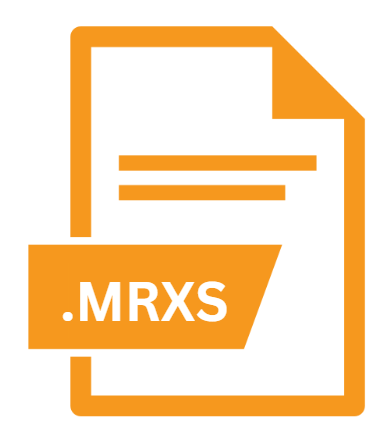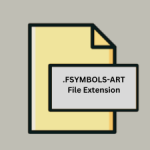.MRXS File Extension

MIRAX Virtual Slide File
| Developer | Carl Zeiss MicroImaging |
| Popularity | |
| Category | Raster Image Files |
| Format | .MRXS |
| Cross Platform | Update Soon |
What is an MRXS file?
.MRXS file extension is associated with MIRAX Virtual Slide Files, which are used primarily in the field of digital pathology.
These files enable pathologists and medical professionals to view and analyze high-resolution images of tissue samples on a computer, providing a digital alternative to traditional glass slides.
More Information.
The development of the .MRXS file format was driven by the need for more efficient and accurate methods of diagnosing and studying diseases at the microscopic level.
Traditional glass slides, while effective, have limitations in terms of storage, sharing, and image quality over time.
Digital pathology, through the use of virtual slides, overcomes these challenges by providing high-resolution, easily shareable, and storable digital images.
Carl Zeiss Microscopy introduced the .MRXS format as part of their MIRAX system, which includes both hardware (slide scanners) and software (for viewing and analyzing slides).
The initial purpose was to create a standardized format that could store large, high-resolution images while preserving the quality and detail necessary for medical analysis.
Origin Of This File.
The .MRXS file format was developed by Carl Zeiss Microscopy GmbH, a company renowned for its innovations in optical systems and medical imaging technologies.
This format was designed to facilitate the transition from traditional microscopy to digital pathology, enhancing the capabilities of pathologists by allowing them to view and analyze slides with greater ease and precision.
File Structure Technical Specification.
The .MRXS file is a complex format that stores multiple layers of data to provide a comprehensive virtual slide. It typically includes the following components:
- Thumbnail Image: A low-resolution preview of the entire slide, used for quick navigation.
- Pyramid Levels: Multiple resolutions of the slide image, from low to high resolution, allowing for efficient zooming and panning.
- Metadata: Information about the slide, such as scanning parameters, patient information, and annotations made by the pathologist.
- Image Tiles: The actual image data, stored in small tiles that can be quickly accessed and stitched together to form the full-resolution image.
Technical Specifications
- Format: Proprietary
- Compression: Typically uses JPEG2000 compression for efficient storage without significant loss of image quality.
- Resolution: Supports very high resolutions, often exceeding 100,000 x 100,000 pixels.
- Color Depth: Can store images in 24-bit color (8 bits per channel for RGB) or higher, depending on the scanning equipment.
How to Convert the File?
Converting .MRXS files to other formats can be necessary for compatibility with different software or for sharing with colleagues who do not have access to MIRAX systems. There are several methods to convert .MRXS files:
- Using Carl Zeiss Software: The proprietary software provided by Carl Zeiss, such as ZEN or AxioVision, often includes export options to convert .MRXS files to more common formats like TIFF or JPEG.
- Third-Party Software: Some third-party applications, such as OpenSlide, can open .MRXS files and offer options to convert them to different formats. OpenSlide is an open-source library that supports various virtual slide formats.
- Online Conversion Tools: While less common, there are some online tools that can convert .MRXS files to other formats. These tools may have limitations in terms of file size and supported formats.
Advantages And Disadvantages.
Advantages:
- High Resolution: The .MRXS format supports extremely high-resolution images, allowing for detailed analysis of tissue samples.
- Efficient Storage: Uses compression techniques like JPEG2000 to reduce file size without compromising image quality.
- Multiscale Viewing: Pyramid levels enable smooth zooming and panning, making it easier to navigate large images.
- Metadata Integration: Stores important information about the slide, which can be critical for medical records and collaborative studies.
- Digital Accessibility: Easier to share and store compared to physical glass slides, facilitating remote consultations and telepathology.
Disadvantages:
- Proprietary Format: The .MRXS format is proprietary to Carl Zeiss Microscopy, which can limit interoperability with other systems and software.
- Large File Size: Despite compression, .MRXS files can be quite large, requiring significant storage space and powerful hardware to handle efficiently.
- Software Dependency: Requires specific software to open and view, which may not be freely available or compatible with all operating systems.
How to Open MRXS?
Open In Windows
- ZEN Software: Developed by Carl Zeiss, ZEN is a powerful tool for viewing and analyzing .MRXS files. It offers a range of features tailored to digital pathology.
- OpenSlide: An open-source library that supports .MRXS files. It can be used in conjunction with software like QuPath or ImageJ to view and analyze slides.
Open In Linux
- OpenSlide: Fully supported on Linux, making it a versatile option for opening .MRXS files. It can be integrated with various image analysis tools available on Linux.
Open In MAC
- ZEN Software: While primarily designed for Windows, ZEN can also be run on macOS through virtual machines or compatibility layers like Wine.
- OpenSlide: Available for macOS, OpenSlide can be used with compatible software to view .MRXS files.













